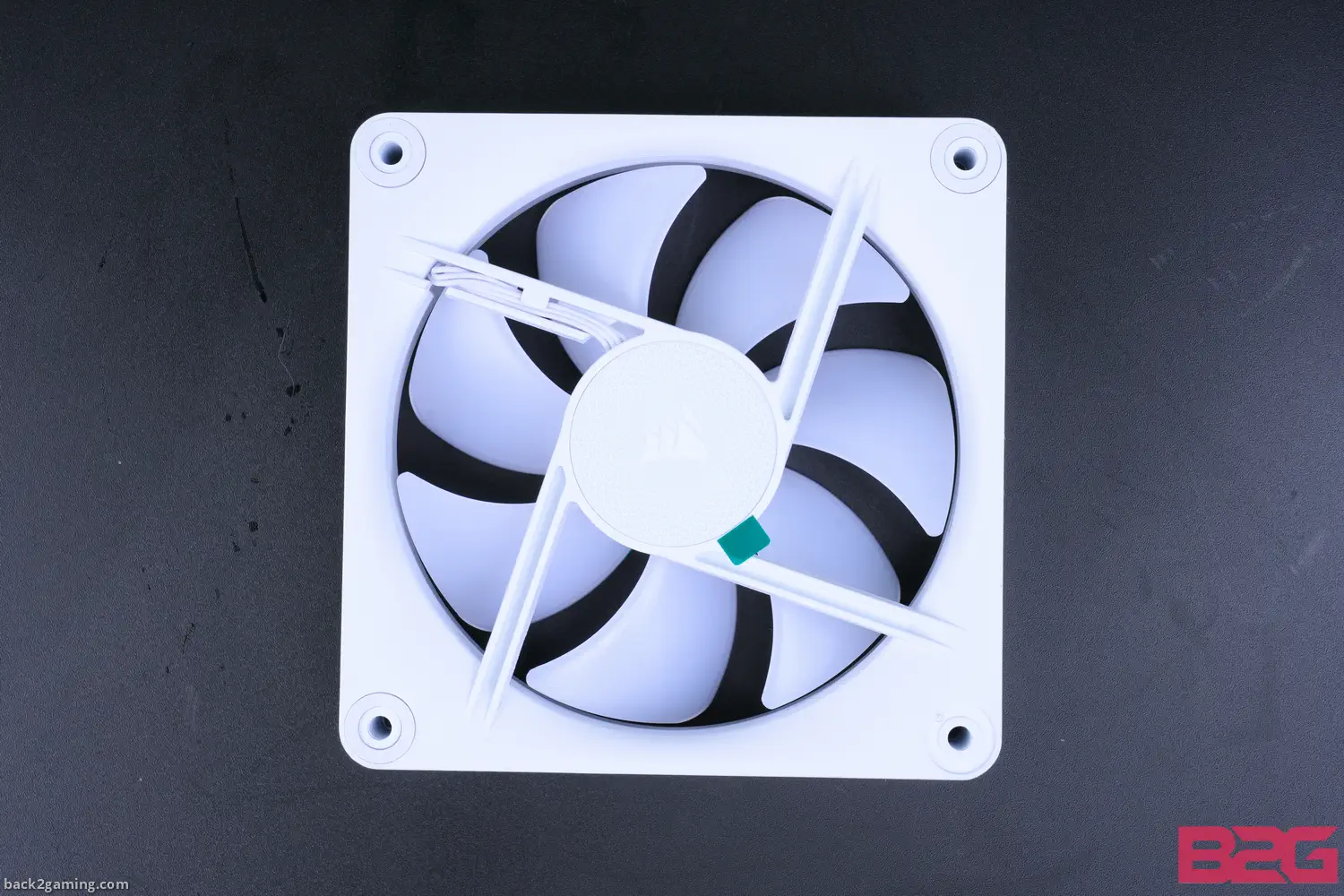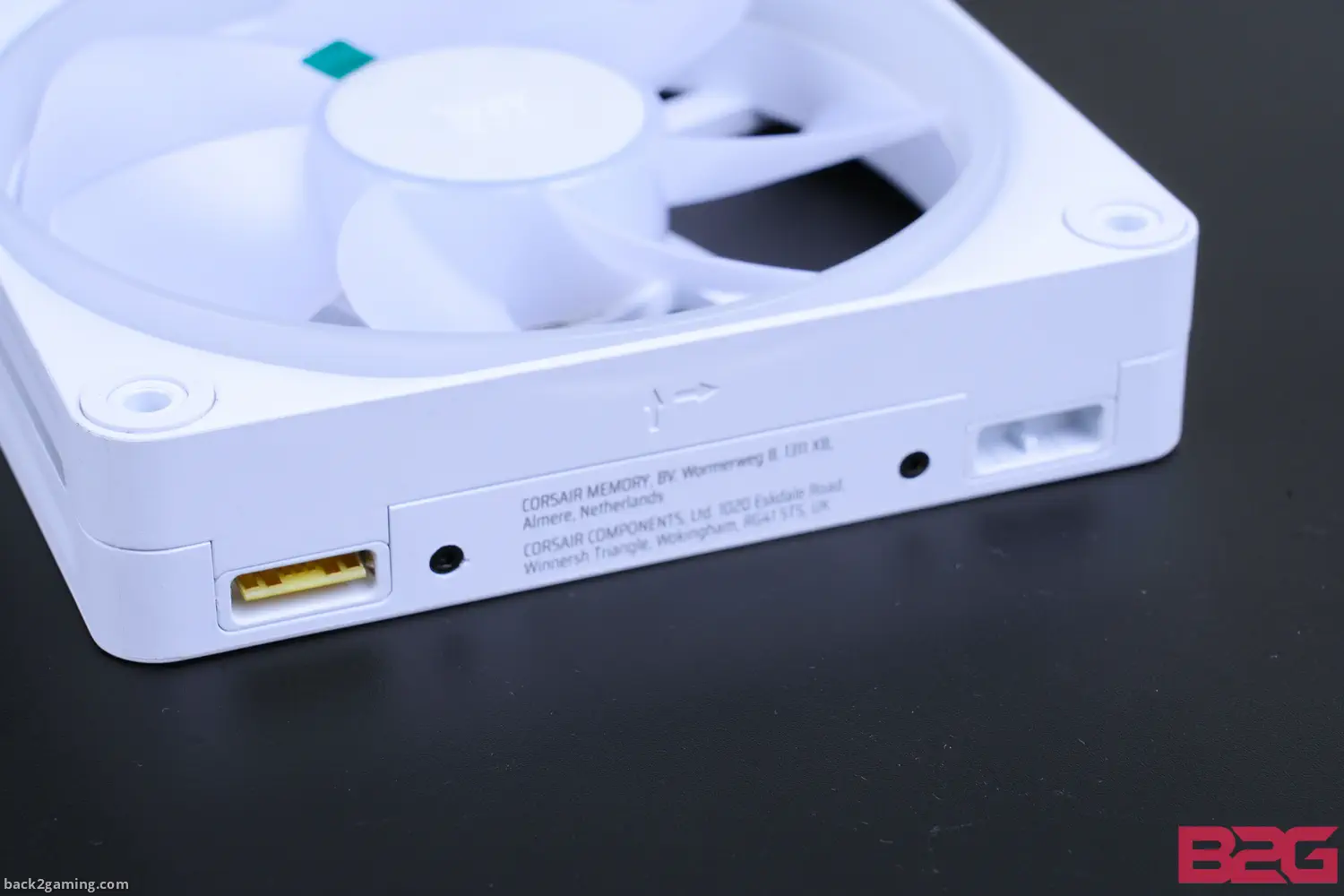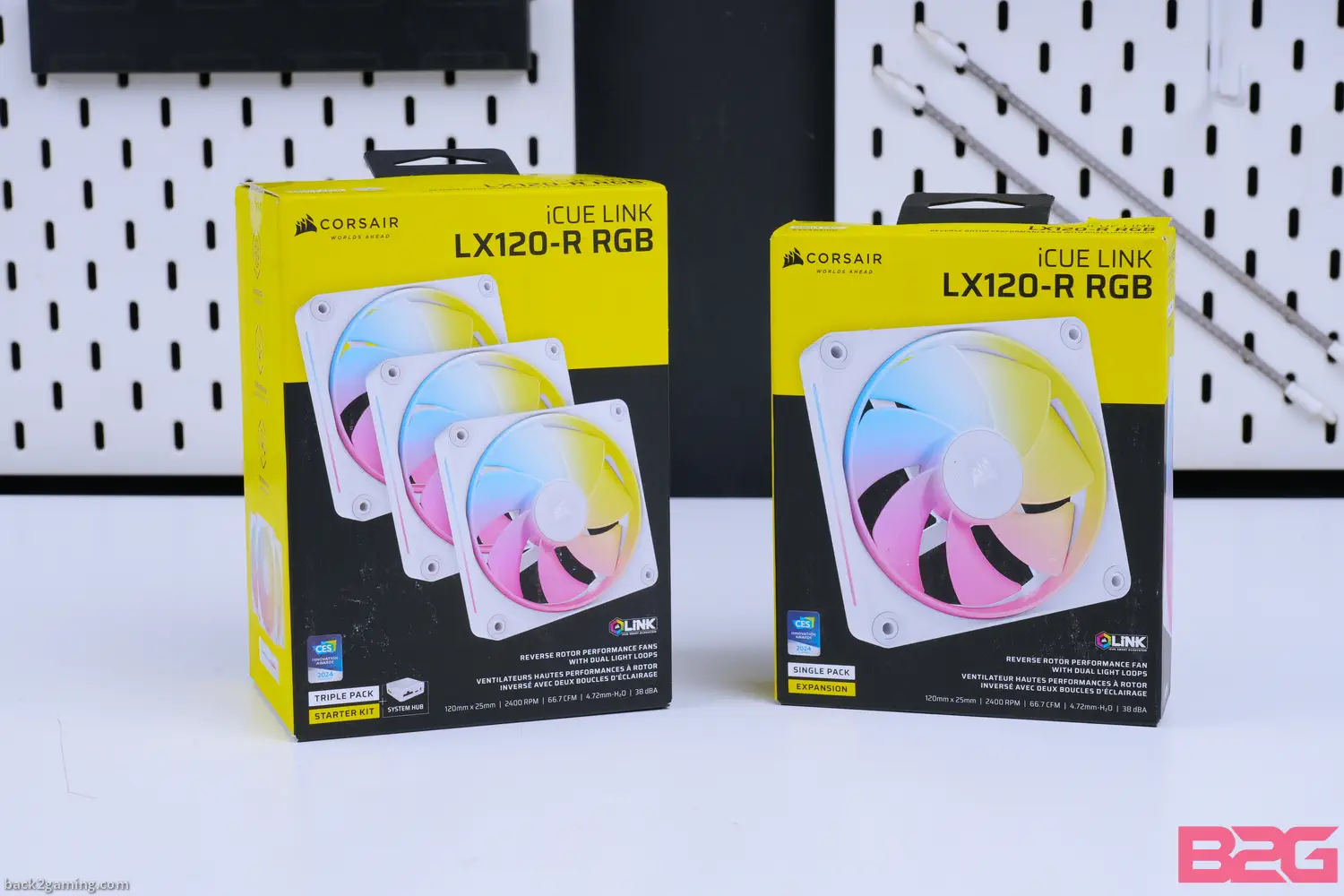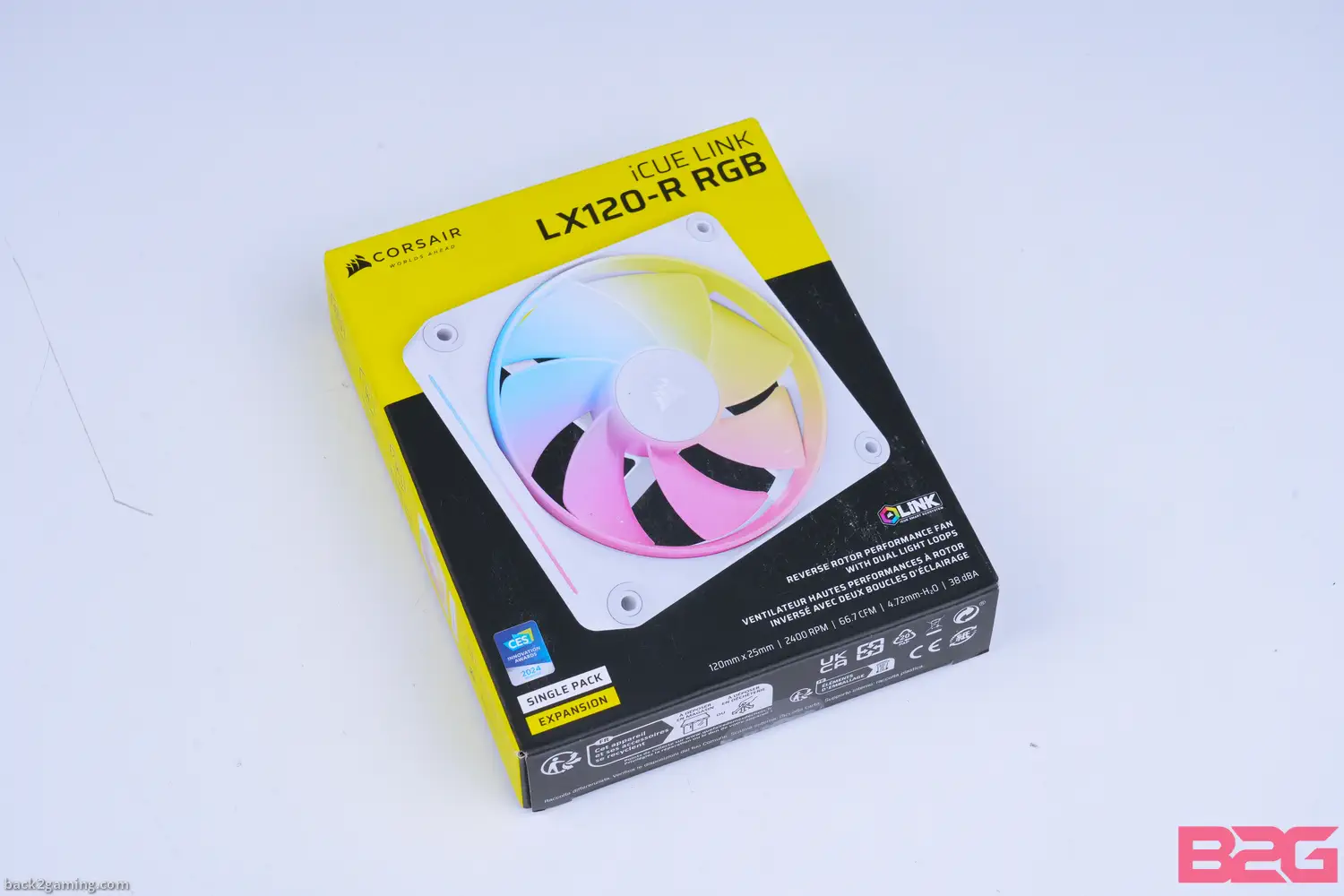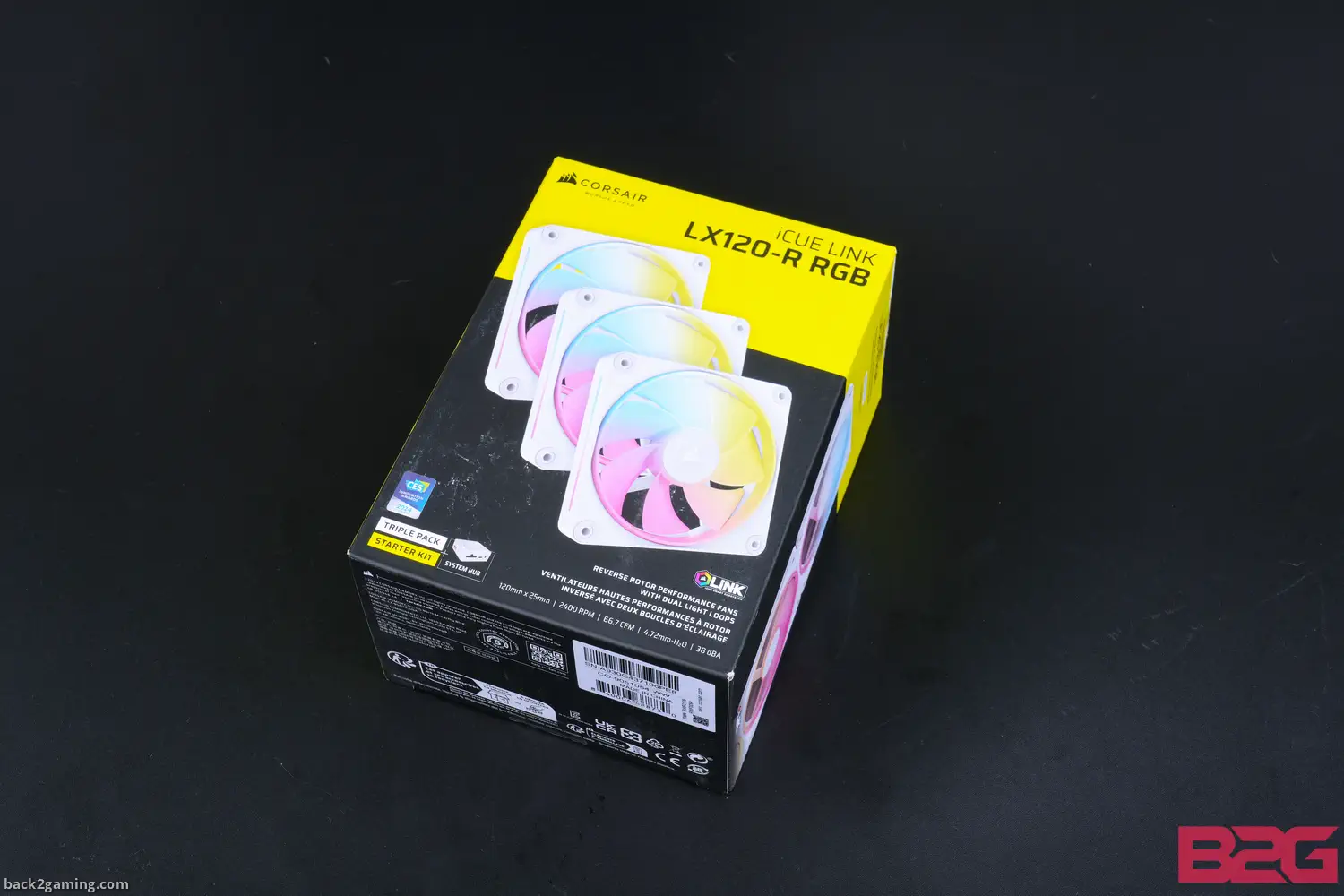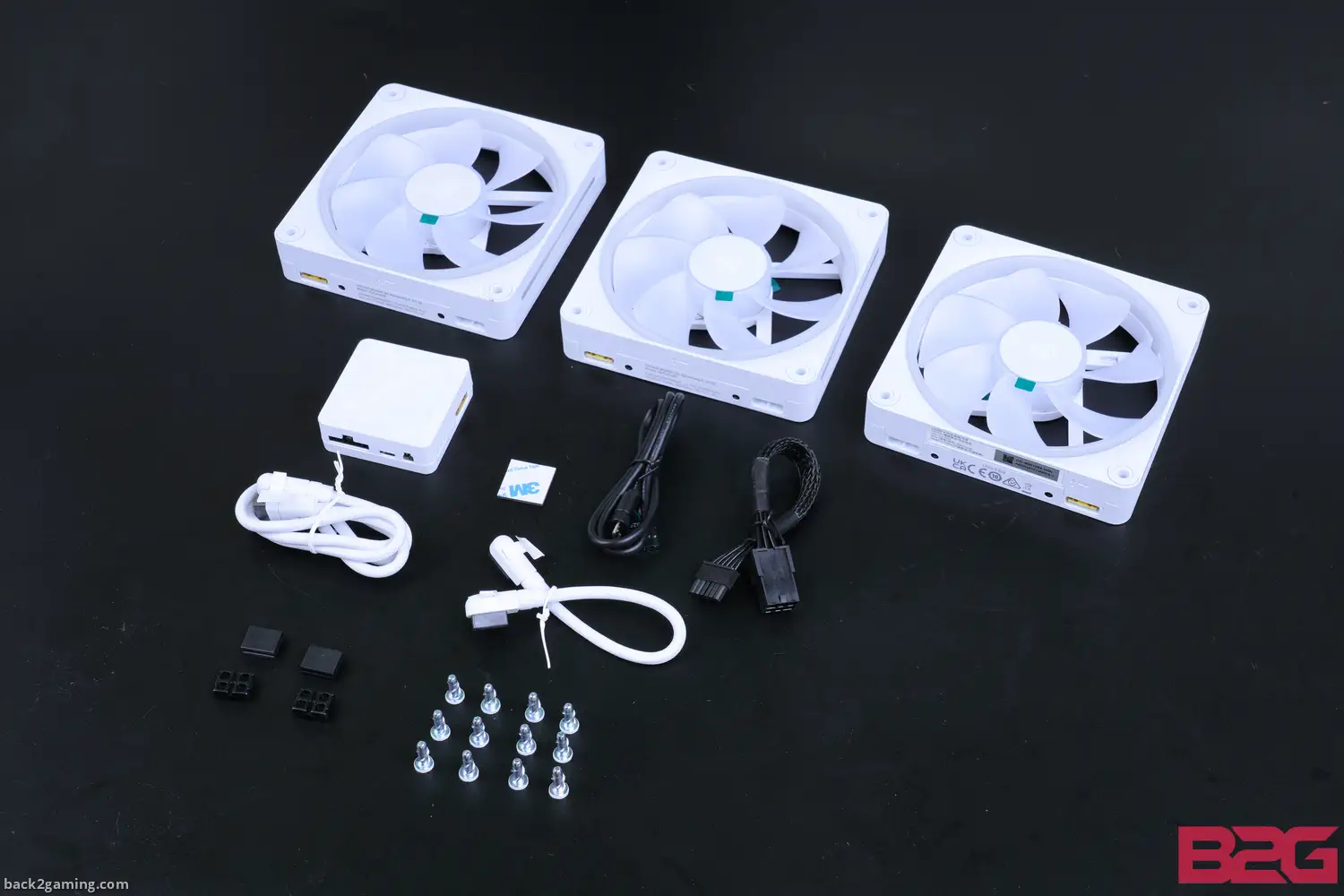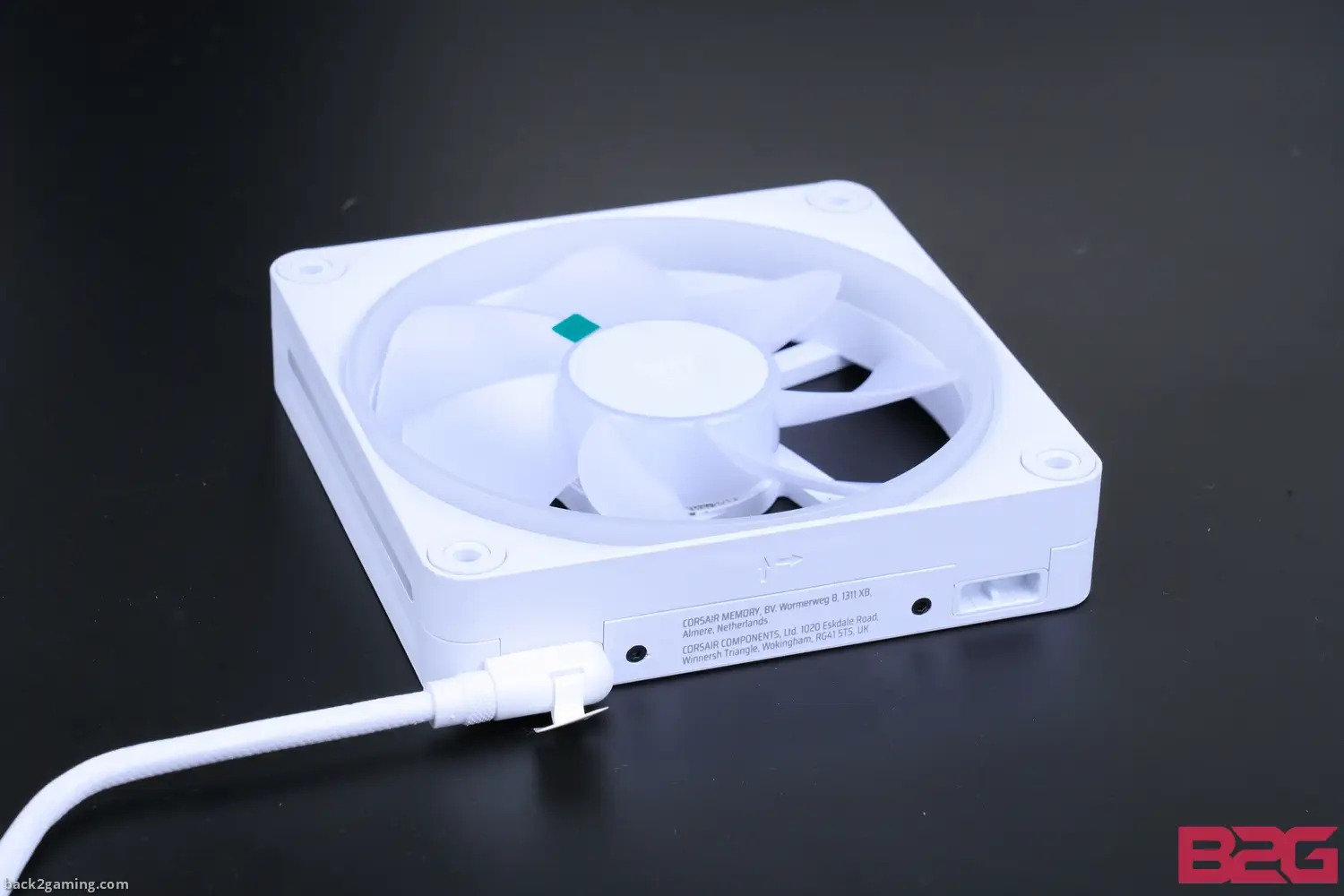Introduction
Reversible fans aren’t new but some mainstays of the industry have not bothered with them as they are literally a very niche application. In most cases (pun intended), the design of the chassis will usually dictate the airflow and having fans with their literally backside for intake is mostly a front fan concern.
Fact remains is that it is an existing problem that has room for a solution and Corsair is launching their own solution under the Corsair iCUE LINK LX family of fans. These new fans are not just available in both standard LX and reverse LX-R orientation (our samples are the LX120-R) , they also boast very respectable performance ratings making them a viable option against the older QX fans if you’re after performance as well.
In this review, we’ll talk about the Corsair LX series fans, particularly the LX-R reverse flow fans.
What is a reverse fan?
Standard fans usually orient themselves like the picture above and blow air towards this direction where the center hub is located. This goes for all fans available now except for, you guessed it, reverse fans. For reverse fans, this area is the intake and due to the center hub and spokes causing some disturbance in flow, they do suffer a small penalty in performance, most of this is negligible.
The typical situation is usually found on front intake fans where the user wants to pull in air or on side-vents where the airflow is directed upwards but the user wants to vent from the side or bottom. This exposes the rear of the fan, which is aesthetically not pleasing to some folks. And yes, this is a purely cosmetic issue but for the most part, if you’re already investing in top dollar for a watercooled setup, a $40 fan isn’t your main concern by now.
As seen above, a stack like this is more pleasing to look at since the hub is at the rear, making it much cleaner to look at. Covered front panels, front-mounted or side-mounted push-pull fan setup, or bottom in-take fans, especially on dual-chamber chassi,s are some of the most common uses but some folks who have high airflow on their exhaust ends usually prefer the rear fans venting inwards so this type of fan is a solution in keeping that visual intact.
Features & Specification
| Fan Specifications | |
|---|---|
| General Information | |
| Weight | 0.255 kg |
| Fan Size | 120mm x 25mm |
| Package Quantity | 1 |
| Performance & Control | |
| Speed | 400 – 2400 RPM |
| Fan Airflow | 11.5 – 66.7 CFM |
| Fan Static Pressure | 0.14 – 4.72 mm-H2O |
| Sound Level | 10 – 37.7 dBA |
| Flow Type | Static Pressure |
| PWM Control | Yes |
| Power Draw | 0.4A |
| Lighting & Compatibility | |
| LED Color | RGB |
| LINK Compatibility | RGB |
The Corsair LX and LX-R series fans are available in singles and starter packs (up to 3 for 120mm, up to 2 for 140mm) and is available in either black or white. The starter packs come with an ICUE LINK system hub in the set.
Corsair LX-R Series Case Fans Official Product Page
Closer Look
Corsair ships the LX-R fans in their signature colored packaging with the bright black and yellow split. The “-R” notation is printed on the actual model name on the front so be sure to check if you’re getting the right fans or the standard ones. I have here the package for the single piece fan and the triple packs. Take note that the packaging has a pastel-like coloring for the RGB on the boxart, this is NOT how the fan looks out of the box which is really misleading for me.
The single fan packaging is literally just a single fan inside and is the best option for just adding up to the maximum 12 fans you can stack in a single iCUE LINK channel.
Above are the inclusions of the single pack.
The triple pack contains a few more extras like a longer iCUE LINK cable and a system hub which is color-coordinated to the package you have.
And for the triple pack we have a system hub inclusion along with the necessary cables for the system hub.
All iCUE LINK cables are cross-compatible across generations. Above is a QX140 fan linked to the newer LX-R fans via the older iCUE Link cable included with the QX140.
The included iCUE LINK cables are angled for a cleaner look. You can plug them in either direction on the contact plug. Corsair did omit including the blank-out plugs for the connector slots, which is a small detail but some do feel that that inclusion helps clean up the look a bit further for the ICUE LINK fans. Let’s be honest though, those are usually on the hidden sides so you have to be really looking to notice.
We used the Corsair LX-R fans to serve as intake for our Corsair FRAME 4000D sample build in my review of the case. This is the typical layout one would see for the LX-R fans. To complete the look, the aesthetics of the Corsair iCUE LINK LX series can fit right in with the QX series with slight differences.
Finished Look
And here they are all lit-up. Notice how the RGB LED is much brighter than the Corsair RS fans mounted on the radiator as well as the lack of concentrated hotspots. The light flows very evenly and matches the quality set by the QX series.
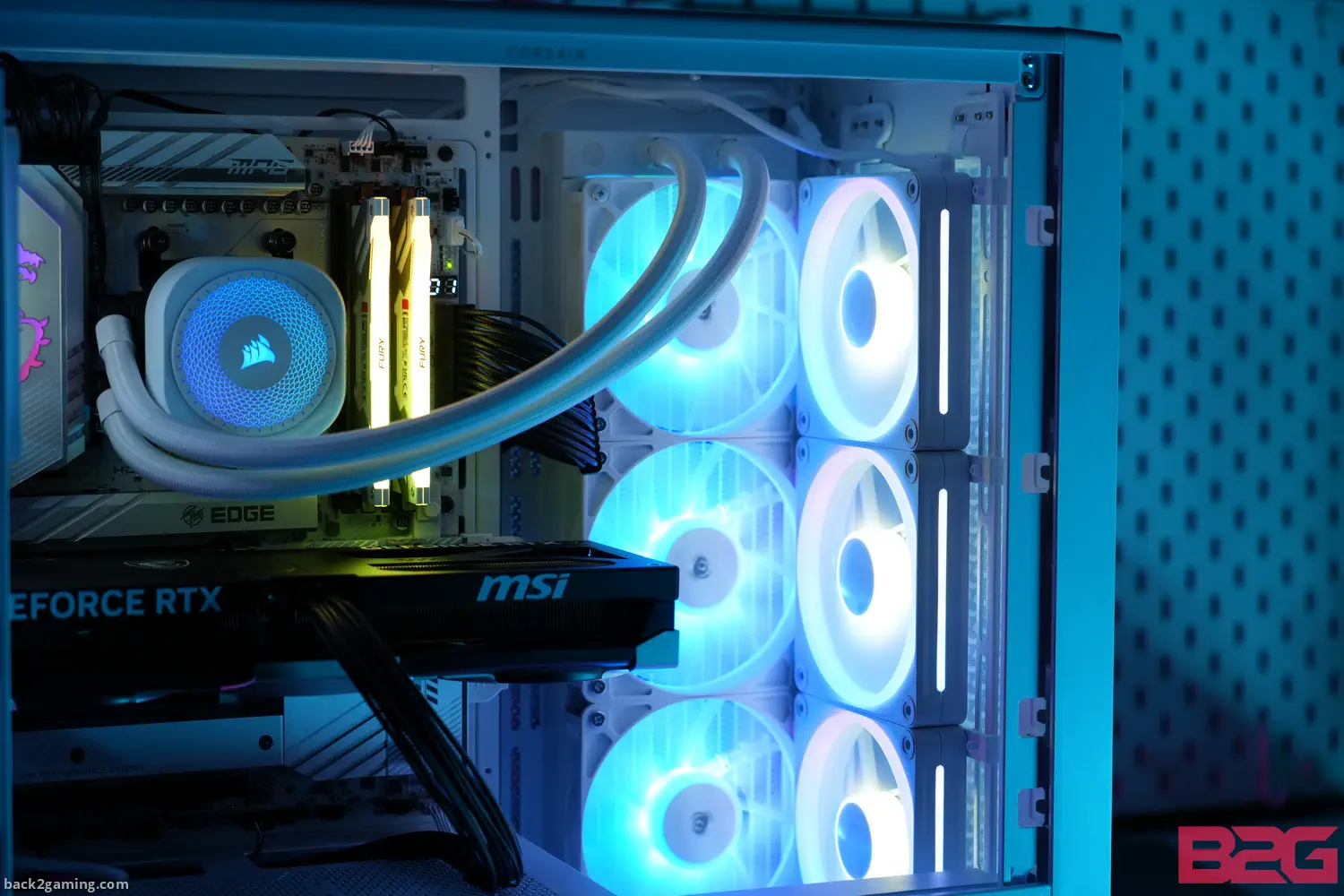
That cable is sticking out! Hear me out first, and this is another criticism. Since the iCUE LINK LX fan triple pack only had a single long cable included and the system hub on the back of the CPU, I actually needed two long cables. For those buying into the iCUE LINK system, this is something worth keeping in mind as Corsair sells these cables separately and my only spare cables are black ones from other builds, and only the straight ones which jut out from the side, unlike the angled connectors, so this is what I have. Still, same clean layout for the Corsair iCUE LINK LX120-R mounted on the back so it blows over at the motherboard,
User Experience & Conclusion
Normally I’ll have some performance numbers put up here but given that these are mostly cosmetic, I opted to keep it anecdotal. And to be quite straightforwad, these are easily a rival to Corsair’s iCUE LINK QX series fans in terms of overall looks. To be fair, they are complimenting as they both have very similar aesthetics. The goal is to keep a uniform look without changing the aesthetic of the case and the LX-R does that phenomenally.
At 2400RPM max, the iCUE LINK LX120-R can get quite audible when used at its maximum rating. Truth be told, I feel Corsair is displacing the QX as the flagship RGB fans as the LX120 non-R fans boast a 5.22mmH20 rating, higher than any of Corsair’s other fans, even the RS120 MAX. It does have a slightly lower airflow volume but retains similar sound levels.
The Corsair iCUE LINK LX-R series fans, particularly the iCUE LINK LX120-R complement the performance of the standard LX120 in situations where balanced aesthetic is more desirable for a negligible difference in performance. In most cases, the PWM will run these fans very minimally so the difference is negligible.
Corsair’s iCUE LINK system is very much an investment and the cost of the system is largely a premium for aesthetic, something that we can argue all day on its value, but is ultimately a very subjective topic. Corsair do not make their new iCUE LINK LX series fans as “just another fan” and is a true performance alternative to its QX counterpart. Available in both standard and reverse options like the iCUE LINK LX120-R we have seen today, Corsair has literally locked-in their environment when it comes to fans, and with numbers like the iCUE LINK LX and LX-R series, fans of the iCUE LINK system will really like this new direction.
The Corsair iCUE LINK LX and LX-R series fans are available now and are backed with an incredible 5-year warranty.



